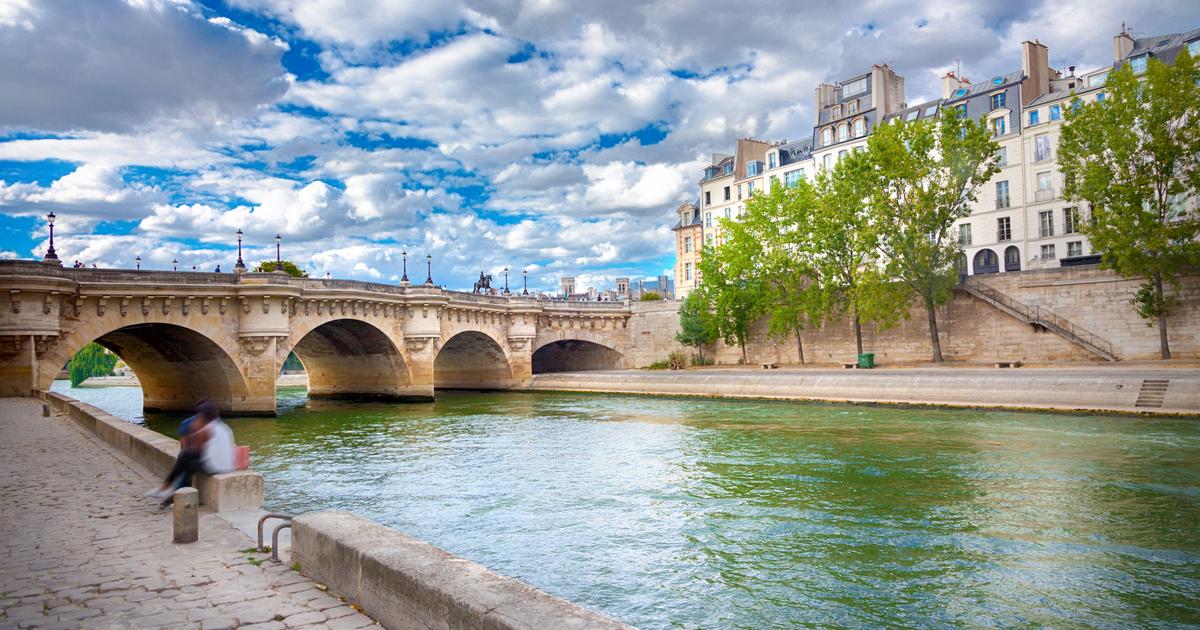If the City of Paris has set itself the challenge of making swimming possible in the Seine for the 2024 Olympic Games, we are still far from the mark.
So drink it?
It seems unimaginable!
However, the water from the taps of Parisians and Ile-de-France residents comes partly from the river.
The other part comes from groundwater.
How can such polluted water become drinkable?
For World Water Day this Wednesday, March 22,
Le Figaro
was able to visit the Sénéo water production plant, the second largest producer and distributor of drinking water in France, which is located at Mont Valérien in Suresnes.
Read alsoWill it really be possible to swim in the Seine by 2024?
The Seine water treatment process
To become drinkable, the water must go through a process that can last three to four hours.
The first step is to remove the solid matter present in the water pumped at Suresnes.
This is called screening.
The second step consists of adding a reagent to the water which allows the limestone particles to agglomerate to form “
flakes
” which will settle at the bottom of a reactor.
This process is called decarbonization and allows the water to become softer.
Third step: clarification.
Organic matter, mineral particles and micro-organisms aggregate and form flakes which will settle at the bottom of the settling tank.
The water then passes through a bed of sand.
This retains the rest of the suspended solids.
It's filtering.
Fifth step, a gas called ozone will be injected and will eliminate the viruses and bacteria still present in the water.
Then, it will pass through a bed of granular activated carbon, which will eliminate organic matter and micropollutants by absorption.
Seventh and penultimate step: the water is treated with UV rays, a process which still aims to eliminate viruses and bacteria that are very resistant to water.
Finally, chlorine is added before the water is stored to guarantee its quality.
Does the water taste the same in Ile-de-France?
No, firstly because of the drinking water stages described above.
Clarification, settling, ozonation... While the process is generally the same in all water services, there are still some nuances.
And these differences can give a particular taste.
Water from Paris will therefore not have the same taste as water from Suresnes, for example.
The taste can also differ depending on the resources used, explains Florent Casy, general manager of Sénéo.
“
Drinking water is local water, water balanced in minerals.
We are attached to a natural resource which itself is attached to geological, mineralogical nature... As there are noses for wine, there are noses for water”
.
Finally, the taste can also differ depending on seasonality, adds the expert.
Can global warming impact the availability of drinking water in Ile-de-France?
Last summer in France, more than a hundred municipalities had no more drinking water due to drought.
The vigilance of the public water service then focuses on the availability of the resource.
"
You have to imagine two aspects: quantity and quality, which are both linked, because the less water you have, the more pollutants you have, this is the principle of dilution", explains Florent Casy
.
To push the comparison, he takes the example of sugar in a glass of water: “
When you have a square of sugar in a glass of water, you smell the sugar.
You put the same sugar cube in the bathtub, there you no longer feel it
”.
The question of the availability of the resource also arises depending on the season.
In summer, water becomes scarcer in times of drought.
"
The water evaporates, but not the pollution
", adds Florent Casy.
Conversely, during the wet seasons in autumn and winter, rain can cause a river to overflow.
"
The resource can then be of poor quality and therefore we cannot use it
," says Florent Casy.
How to prepare for this eventuality?
"
The security we have today still allows us to produce water in winter from the Seine since in the interconnected area, we have reservoir lakes which are managed by another public institution and which allow to buffer and dampen these phenomena of intense rain
", wishes to reassure Florent Casy.
When the Seine is too loaded with organic matter, Sénéo can still switch to buying water from underground sources.
“
Summer is a bit the same thing: we are affected a lot on our surface water, and not too much on our groundwater.
We can also count both on our contracts with other suppliers and both in good mutual aid and solidarity with our neighbours.
Securing then involves diversifying resources.
“
The day a resource is lacking, you have to have a plan B, plan C, plan D etc.
“, concludes the expert.

